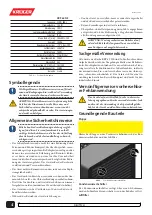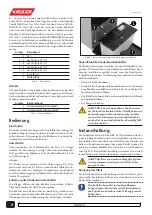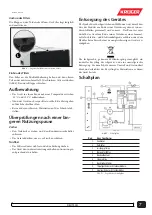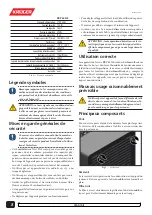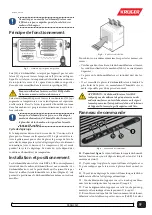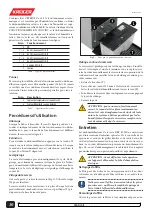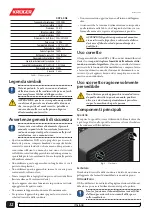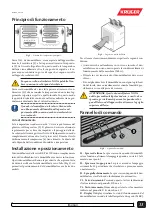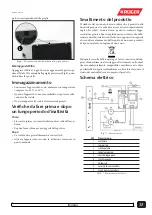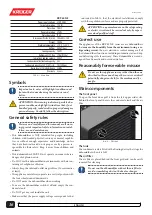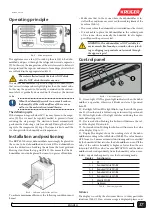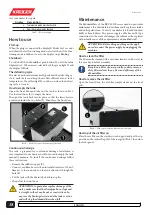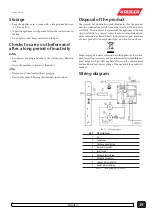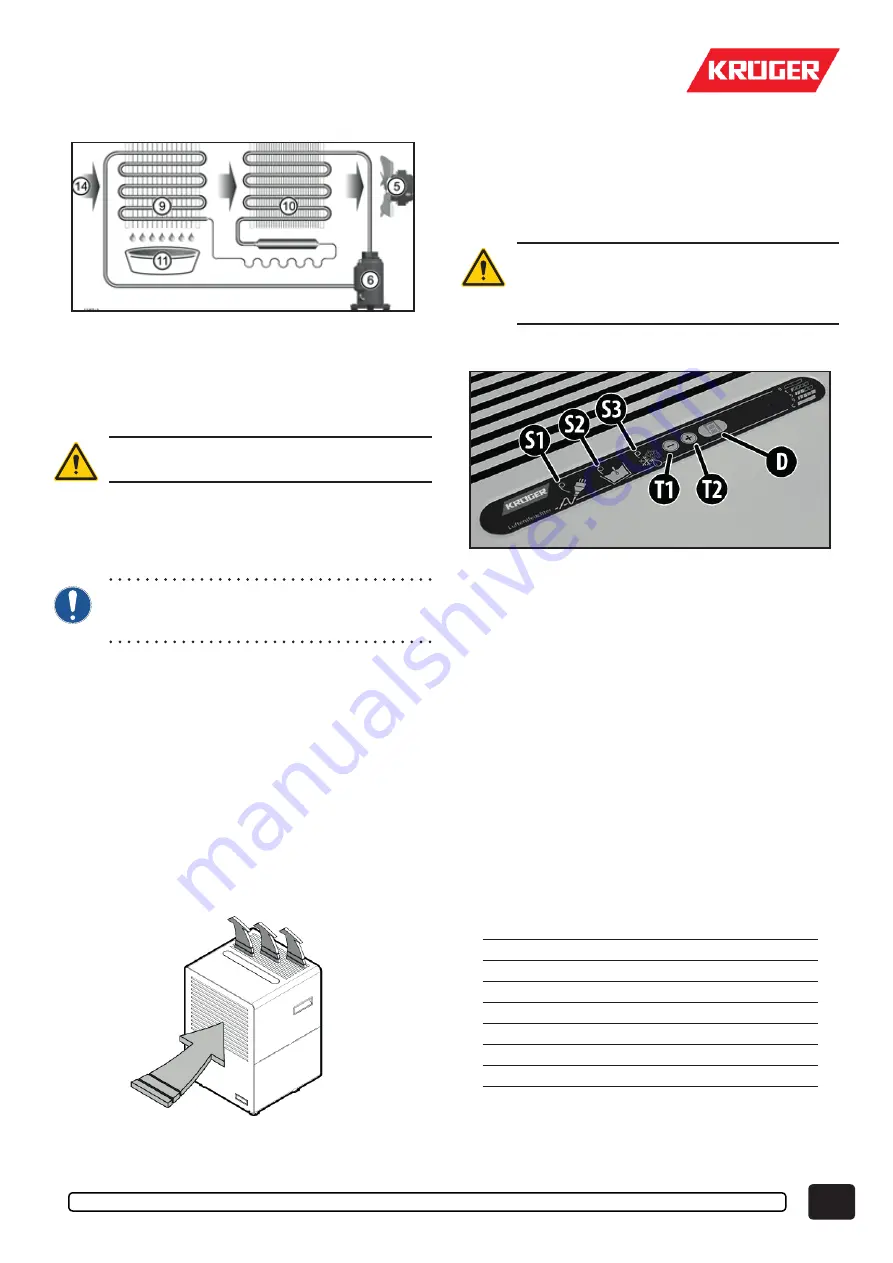
ENGLISH
17
M1145-2_draft-0
Operating principle
Pic.2 –
Main components
The appliance uses a fan (5) to suck up the air (14) to be dehu-
midified and pass it through the refrigerator circuit evaporator
(9). In this way the temperature of the air is lowered to below its
dew point and the vapour condenses to form drops of water that
are collected in the appropriate tank (11).
The water collected inside the tank is NOT drink-
able. Do NOT drink this water anyway.
The air thus dehumidified is passed through the condenser (10)
that raises its temperature slightly higher than the initial value.
In this way the quantity of humidity contained in the environ-
mental air is gradually decreased until it reaches the desired
value.
When the dehumidifier works in a room it reduces
the humidity of the walls and floor of the room, as
well as in the materials contained therein.
The defrosting cycle
If the temperature goes below 16°C ice may form on the evapo-
rator (9). The ice must be regularly melted to prevent it from
reducing the air passage. The electronic board automatically
performs the defrosting cycle (see ahead). During the defrost-
ing cycle the compressor (6) stops. The time it takes to melt the
ice changes with the humidity and temperature.
Installation and positioning
The KRP 60 NE series dehumidifiers must simply be placed in
the room to be dehumidified and started. The dehumidifiers
have the distinction of sucking the air from the front grid and
blowing it out from the top grid (Pic.3): this means that the de-
humidifier can even be placed between two pieces of furniture.
Pic.3 –
Inlet and outlet of the air flow
To achieve maximum efficiency the following conditions must
be met:
• Make sure that in the room where the dehumidifier is in-
stalled the conditions never exceed the working limits of the
machine (Tab.A);
• The room where the dehumidifier is installed must be closed;
• It is advisable to place the dehumidifier in the coldest point
of the room, where normally the humidity level is higher,
possibly near the power socket.
WARNING: This dehumidifier is NOT suitable for
environments like laundry, or similar, where splash-
ing or dripping can penetrate water inside through
the upper air grid.
Control panel
Pic.4 –
The control panel
S1 - Green light ON The green light indicates when the dehu-
midifier is operative, otherwise it blinks on status 0 (powered
but off).
S2 - Red light, full tank The light blinks, together with the green
one S1, when the tank is full, missing or incorrectly positioned.
S3 - Yellow light, defrost The light switches on during the auto-
matic defrosting cycle.
T1 - Decrease button Pushing this button will decrease the val-
ue of the display D down to 0.
T2 - Increase button Pushing this button will increase the value
of the display D up to C.
D - Display The display shows the working state of the dehu-
midifier according to the table below (Tab.B). The value 0 means
OFF, from 1 to 9 means automatic functioning and is controlled
by the humidistat that switches the dehumidifier on or off if the
value of the relative humidity is higher or lower than the one
shown in Tab.B. The value C means ALWAYS ON and the dehu-
midifier works independently from the humidity value: never-
theless, any alarm has priority over the functioning mode.
Display Functioning
0 Off
1 ÷ 2
from about 85% to 90% R.H.
3 ÷ 4
from about 70% to 80% U.R.
5 ÷ 6
from about 60% to 65% R.H.
7 ÷ 8
from about 45% to 55% R.H.
9
about to 40% R.H.
C Continuous
Tab.B – Functioning modes
Failures
The display is used by the electronic device to show particular
situations (Tab.C). If an error message is displayed please con-


